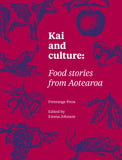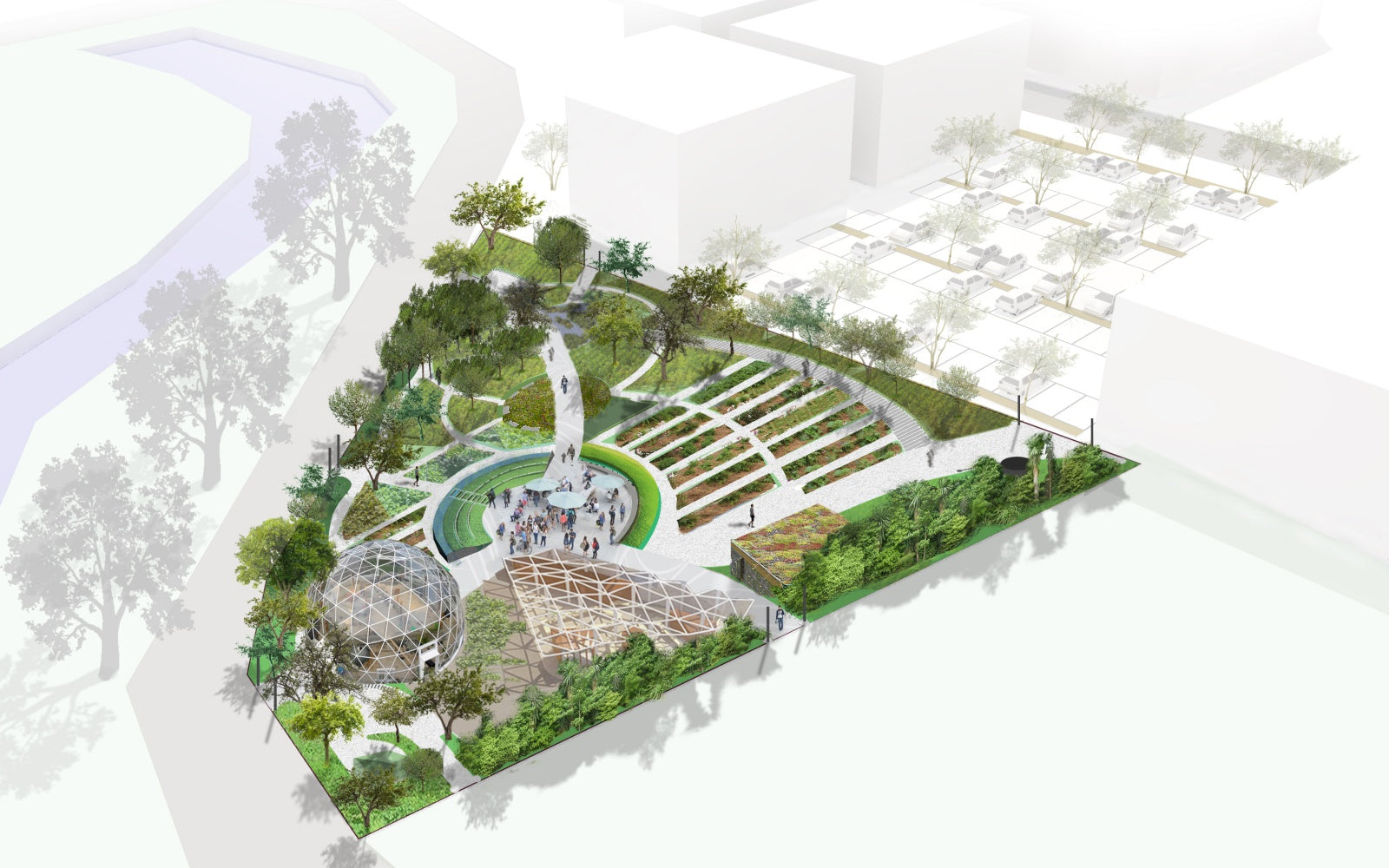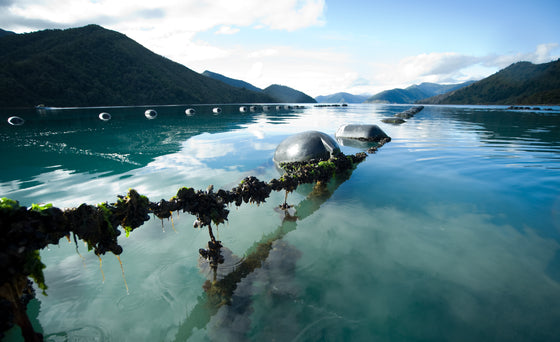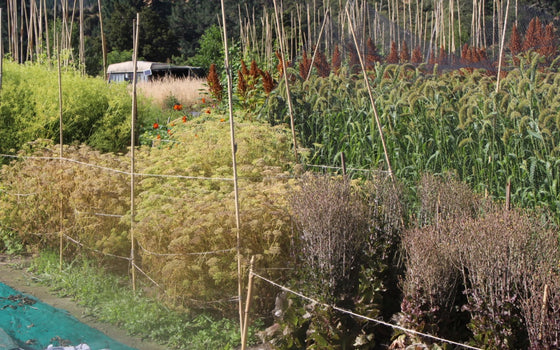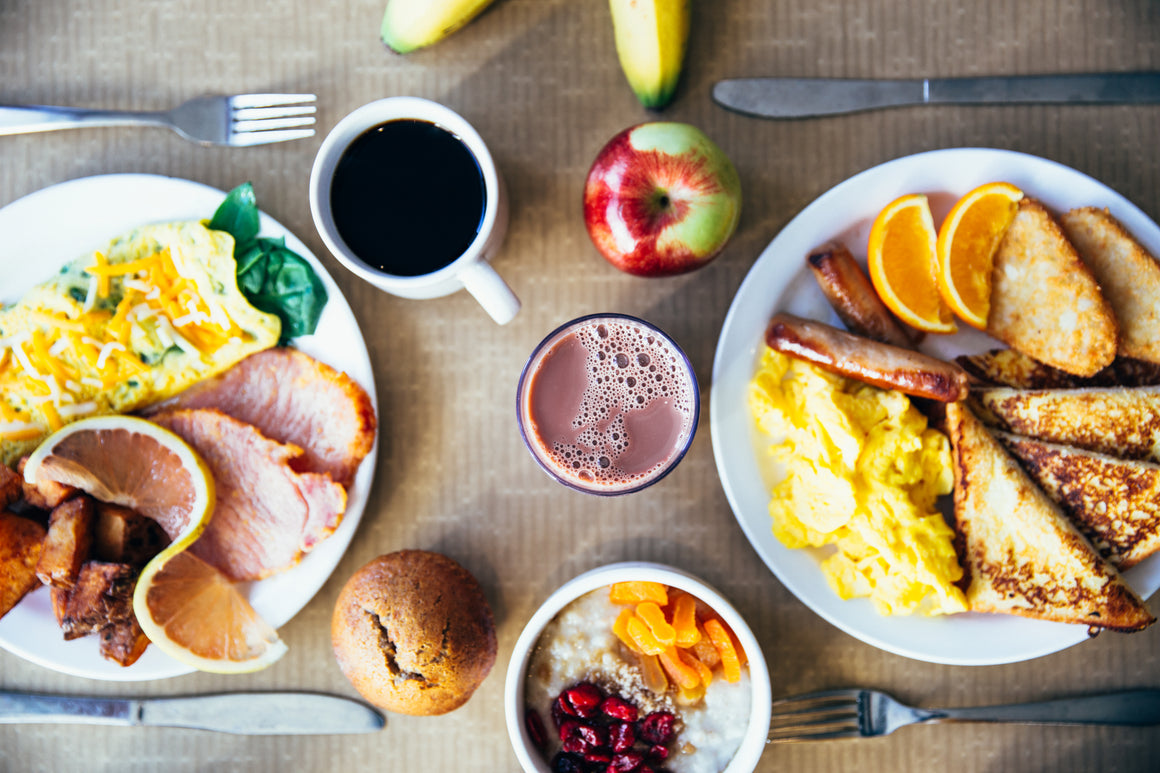An edible city: Ōtākaro Orchard
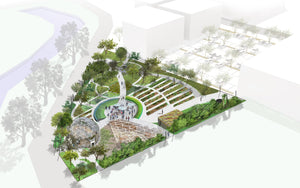
The Christchurch earthquakes (2010–11) revealed how vulnerable our traditional food systems were when supermarkets began running out of food. Other food retailers sustained damage, and transport links were compromised: the Christchurch–Lyttelton tunnel closed, and other parts of Christchurch were inaccessible due to damage to road and rail, flooding and liquefaction. Food resilience needed a rethink.
In the wake of the extraordinary events, people began to view the city and region differently and were open to new ideas, including a reimagining of food systems. ‘We’re in a pretty unique position in that it could be entirely physically possible for us to meet all of our food supply needs from within the region’, Chloe Waretini explains. With much of the built environment in the city gone, there was a move to celebrate the land and renewed interest in community gardens, which had become ‘a vital community asset and place of refuge’. Building upon this impetus, the concept for Ōtākaro Orchard emerged: food production ‘incorporated into beautiful urban spaces which are stewarded by, and also feed, our community’. In other words, an expression of ‘the Edible Garden City’. At full production, it is estimated that the 1700m2 urban park will produce 100 bags of greens per week, and a tonne of fruit and nuts each year.
As an urban commons, the project also aims to address concerns over fresh food affordability (Chloe refers to data that has shown that 40 per cent of Cantabrians struggle to have access to the food they need). With no fences, and large amounts of food grown on-site that will be available to all, Ōtākaro Orchard hopes to make food accessible, as well as to educate. Signs will provide guidance; an on-site cafe will use ingredients to show people what they could make at home. Additionally, there will be a ‘Local Food Information Centre on-site – a place that people can come and get advice about how to get growing at home, where their nearest community garden or farmers’ market is, the ethics of farming and more’. The aim is ‘to make as much of the local food system and innovations visible through this project’.
But there are also cultural challenges to address. While the rise of farmers’ markets, community gardens and foraging in some sectors of society indicates a desire to have a stronger relationship with where food comes from, most urban dwellers access their food through supermarkets – convenience reigns in a time-strapped lifestyle. Ōtākaro Orchard is aware of this: ‘The idea of going to a park to grow and harvest food is still pretty radical for most people, as is having fruit and nut trees growing along our road verges. There are questions about whether it is ok to harvest, what to do with it and how to know if something is good to eat.’ Chloe sees these aspects as ‘the learning edges’ that urban dwellers ‘will engage with through the Edible Garden City. The Ōtākaro Orchard aims to make it easy to grow this kind of literacy and practice.’
It may seem radical to some, but Ōtākaro Orchard is translating traditional ideas to our times, and hopes to make the rich history and knowledge of growing food in the city visible. The site of Ōtākaro Orchard, which is near the Avon Loop on Cambridge Terrace, was a mahinga kai site for Māori and food basket for the city in colonial times. In fact, the first Mayor of Christchurch, William Wilson, was known as ‘Cabbage Wilson’ and had a farm close to the site. Ōtākaro Orchard has been aware of this historical context as the team has developed the project: ‘We’ve been working with Matapopore on incorporating mahinga kai concepts (we’re even planning to construct a hāngi pit), and the Canterbury Horticultural Society (founded in the 1850s) to weave in these strands. A significant focus on the orchard’s operations will be facilitating intergenerational knowledge transfer.’
Ōtākaro Orchard seeks to become the ‘front door vision’ of Christchurch as the world’s best edible city. The challenge to seeing it happen, as Chloe notes, is a cultural one. What needs to change for this to become a regular part of our urban lives? As an engaging example of food in city spaces, Ōtākaro Orchard hopes to inspire many other initiatives, and drive engagement in this regenerative food culture in Christchurch and Canterbury.
Otakaro Orchard : an edible hub in the heart of Christchurch. Image by Steffan Kraberger
Extract from Kai and Culture: Food Stories from Aotearoa, edited by Emma Freeman (Freerange Press, 2017). If you would like to buy a copy click here.
